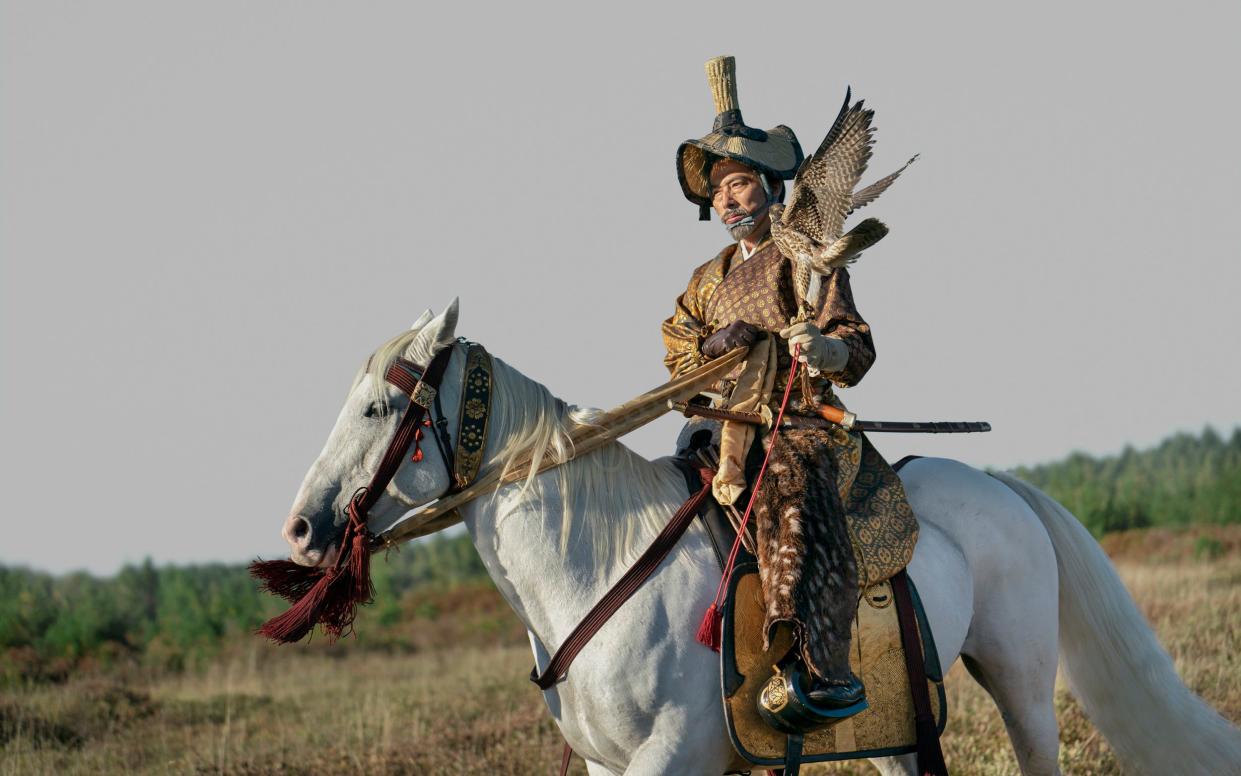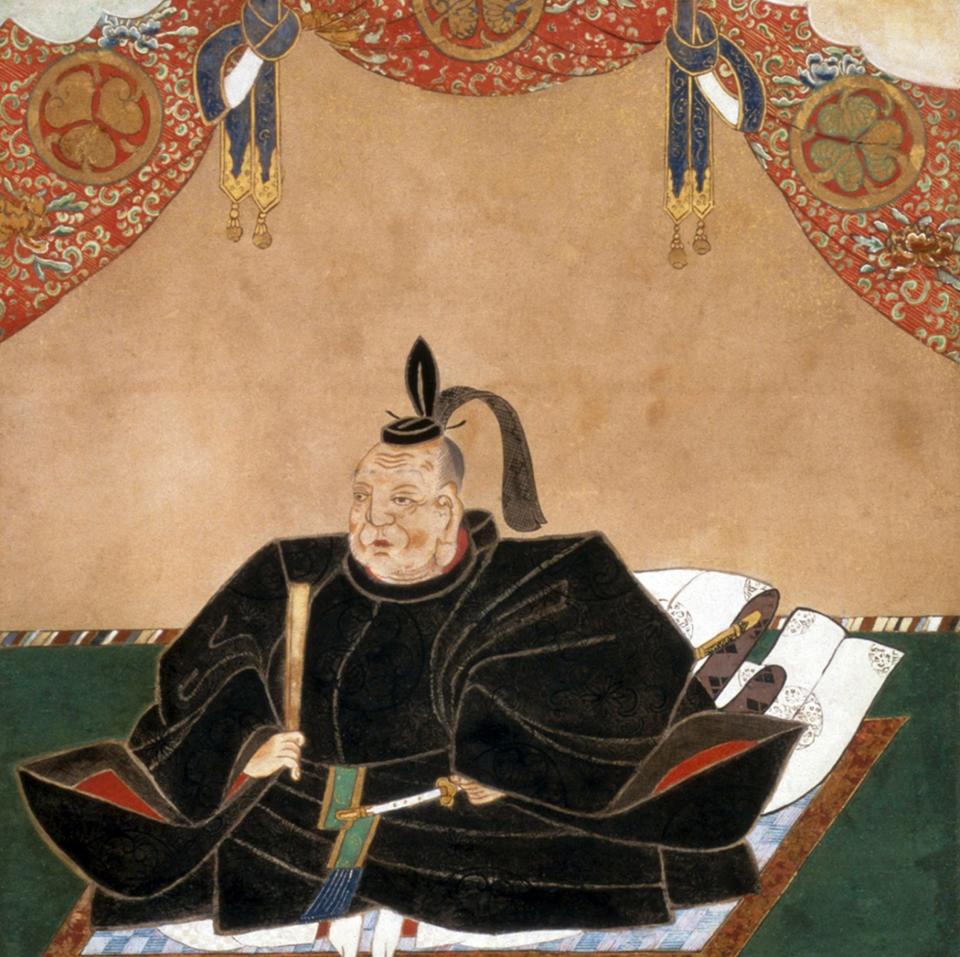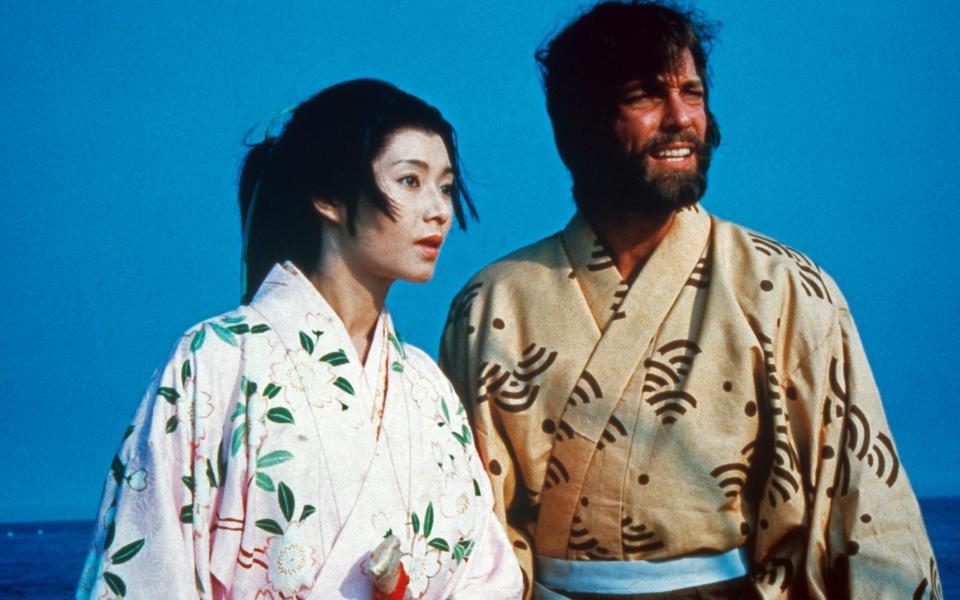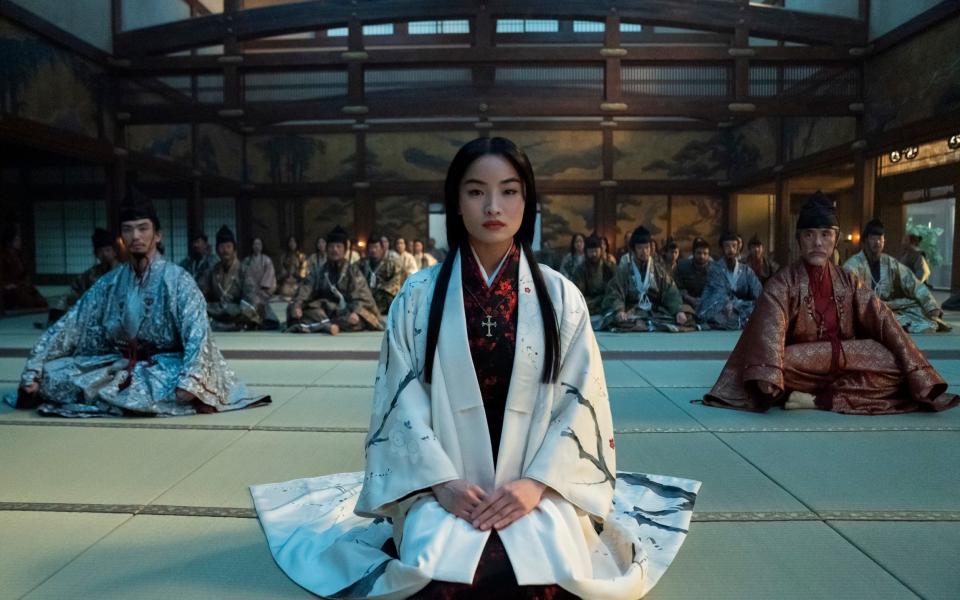Ritual suicide and crucifixion: the bizarre, blood-soaked reality of Disney’s Shogun

- Oops!Something went wrong.Please try again later.
- Oops!Something went wrong.Please try again later.
“In Japan, you must be good!” These words, spoken by a cowering villager, mark Englishman John Blackthorne’s introduction to Japanese life. This is the opening of Disney+’s Shōgun, and much of the drama turns on the question of “good” means when these two very different cultures meet.
The year is 1600, and Blackthorne is the pilot of the Dutch ship Erasmus. His storm-damaged vessel has somehow managed to creak and heave its way to the coast of “The Japans”, shrouded in ghostly fog and with its sails torn to shreds.
Blackthorne, played by Cosmo Jarvis in Disney+’s new adaptation of James Clavell’s hit novel Shōgun, is in scarcely better shape than his ship. He is starving, his clothes are dirty, and his hair and beard are sodden and bedraggled. And things get worse when the samurai come hurrying to the coast to enquire after the barbarian ship that has appeared off-shore.
Within the space of a few days, he and his fellow crew are thrown into a pit and have entrails poured over them; Blackthorne is urinated on, one of the others is boiled alive, and a villager is abruptly beheaded by a samurai – for no reason that Blackthorne can discern. He wants to escape this awful place, and return to the England of Queen Elizabeth: to Christianity and the rule of law.
The inspiration for Blackthorne was a real-life English navigator, William Adams, whose Dutch trading ship anchored off Japan in 1600. Japan was at this point reaching the end of long and bloody decades of civil war, during which samurai lords schemed and battled for territory and power. The ultimate prize was reunification of the country under a single person’s control: briefly achieved by the warlord Hideyoshi, only for his death in 1598 to plunge the country into uncertainty once again.
Adding to the intrigue were Jesuit missionaries and Portuguese traders, who had arrived in Japan half a century before and begun making converts and considerable sums of money – the latter largely thanks to control of an extraordinarily profitable China-Japan trade. Raw silk sometimes retailed in Japan at around ten times its purchase price in China.
No wonder, then, that the Portuguese tried to persuade the Japanese that this Protestant interloper, William Adams, was a pirate – and ought to be treated accordingly. Frederik Cryns, a professor of Japanese history at the International Research Center for Japanese Studies, Kyoto – who served as historical advisor on Shōgun and is the author of a forthcoming biography of Adams – tells me that the Englishman “was very afraid he would be executed… perhaps on a cross”. Crucifixion was one of several methods of capital punishment at the time in Japan.
Adams was pardoned by the warlord Tokugawa Ieyasu, who was busy manoeuvring himself into position as Japan’s future ruler. Adams petitioned Ieyasu to be allowed to return home but Ieyasu was having none of it. “Ieyasu really liked him,” says Cryns, “for his knowledge as a navigator. Ieyasu probably didn’t know that England and Holland existed… so he got a whole new worldview through Adams.”

Adams and his European crewmates went on to build two ships for Ieyasu, after a final battle in the autumn of 1600 cleared the way for Ieyasu to become shōgun: an ancient role whose full title in Japanese approximates to “barbarian-crushing generalissimo”. Adams also served Ieyasu as a negotiator with various European trading powers, and was given the high samurai rank of hatamoto as a reward – a rare honour, particularly for a foreigner. Europeans visiting Japan in the 1610s regarded Adams, says Cryns, as “not an Englishman anymore – but a Japanese”. In Disney’s Shōgun, Blackthorne is taken from the coast to Osaka Castle where he encounters Lord Toranaga, based on Tokugawa Ieyasu and brought to life by Hiroyuki Sanada (The Last Samurai) as a master strategist possessed of serious gravitas.
Osaka Castle and its surrounds are recreated here in lavish and painstaking detail: evidence both of a big budget and a determination to bring some balance to a story that was previously told – in Clavell’s 1975 novel and Paramount’s 1980 miniseries starring Richard Chamberlain and Toshirō Mifune – primarily from Blackthorne’s point of view. In this new adaptation, says Cryns, the American and Japanese production teams “wanted to have the viewpoint of all the [main] players”. He adds: “It’s not westerners discovering an exotic culture. It’s two cultures coming together.”
Not, however, coming together for polite conversation. These were violent times in Japan. The grizzly fate suffered by one of Blackthorne’s fellow crew early on – boiled alive in a huge cauldron – was, says Cryns, rare in Japan but not unheard of. The warlord Hideyoshi once punished an outlaw, Goemon Ishikawa, by having both him and his son boiled alive in public.

Shōgun also features seppuku: ritual suicide, practiced by samurai in this era for a range of reasons including bringing dishonour on one’s lord. Sometimes a man’s heir might be forced to die with him – even if still a child. For instance, Lord Blackthorne’s love-interest in the new series, Lady Mariko, a Japanese Christian noblewoman, comforts a mother who is about to lose her baby in this awful way.
One of the challenges for Shōgun is how to manage the romance that develops between Blackthorne and Mariko, who is married to a jealous and menacing warrior played by Shinnosuke Abe. When the novel was first published, Clavell was criticised for depicting Mariko hopping into a bathtub with Blackthorne. He had wanted to suggest to Western readers that the Japanese aren’t hung up about sex and sin. But the idea that a married noblewoman, who was also a devout Christian, would countenance sharing bathwater with a Western barbarian struck critics as ridiculous – and also unfortunate, given that Westerners’ impressions of Japanese women were already overly reliant on clichéd notions of geisha and courtesans.
“Of course,” Cryns tells me, “in real life [this relationship] didn’t happen – but it could be possible.” Had it happened, in the Japan of this period, Mariko’s husband “would be allowed to kill her” – along with Blackthorne. Keen to avoid spoilers, Cryns says little about how things play out between Blackthorne and Lady Mariko in this new adaptation. But he was deeply impressed, he says, by the commitment of the writing and production teams – led by Rachel Kondo and Justin Marks in the US and Hiroyuki Sanada in Japan – to making Shōgun as faithful as possible to its historical context.

Had the samurai been little more than killers, it is hard to see westerners taking such an interest in them – as they have done from the late 19th century to the present day. In fact, having replaced Japan’s old aristocracy as the country’s cultural elite, the samurai engaged in all sorts of pursuits besides slashing, crucifying, boiling and beheading. They read Buddhist sutras, practised calligraphy, painted, collected art, and enjoyed performances of the notoriously subtle and allusive Nō theatre. Cryns is pleased that Shōgun features both Nō and Japan’s tradition of linked-verse poetry, known as renga.
Ultimately, Blackthorne, Toranaga and Mariko are three very different characters who nevertheless share a powerful curiosity and an openness to new ideas. In our own sometimes narrow and fearful times, these seem like thoroughly ‘good’ values to rediscover, whether abroad in Japan or back at home.
Shōgun is available in the UK on Disney+ from 27 February. In the Service of the Shogun: The Real Story of William Adams, by Frederik Cryns (Reaktion Books) is published on 1 May.

